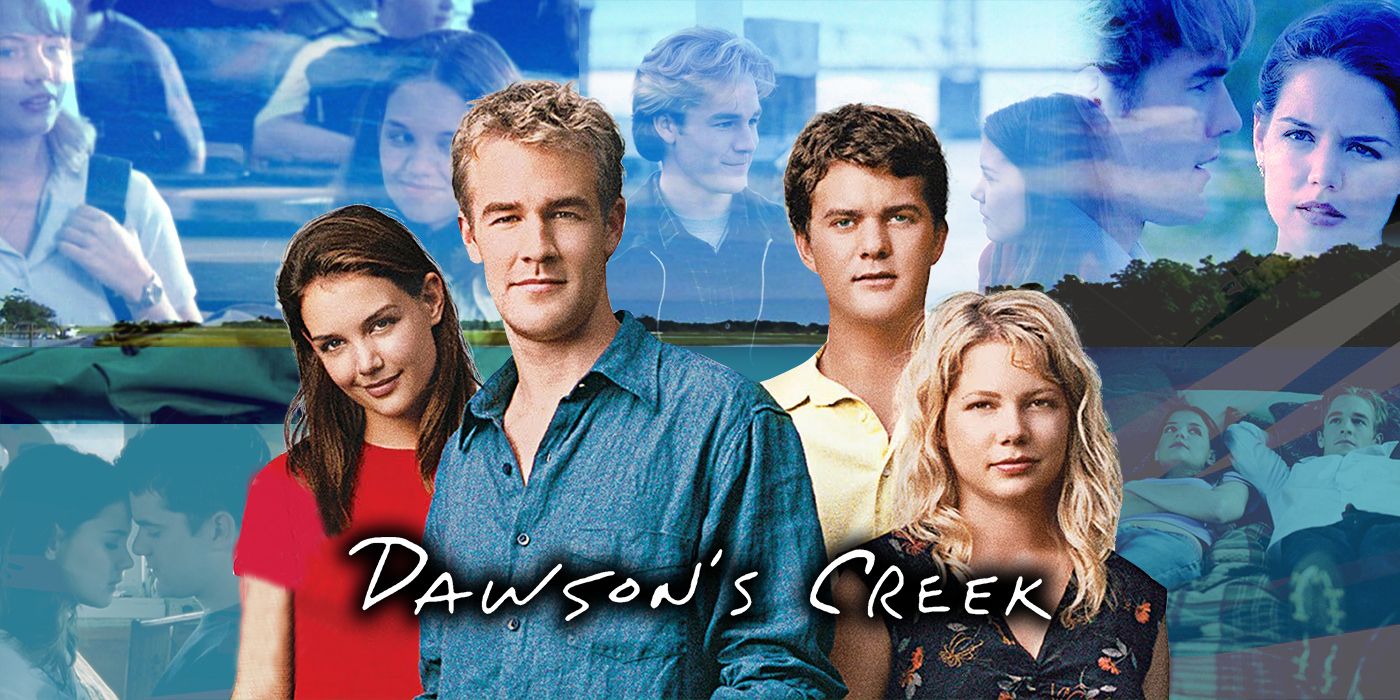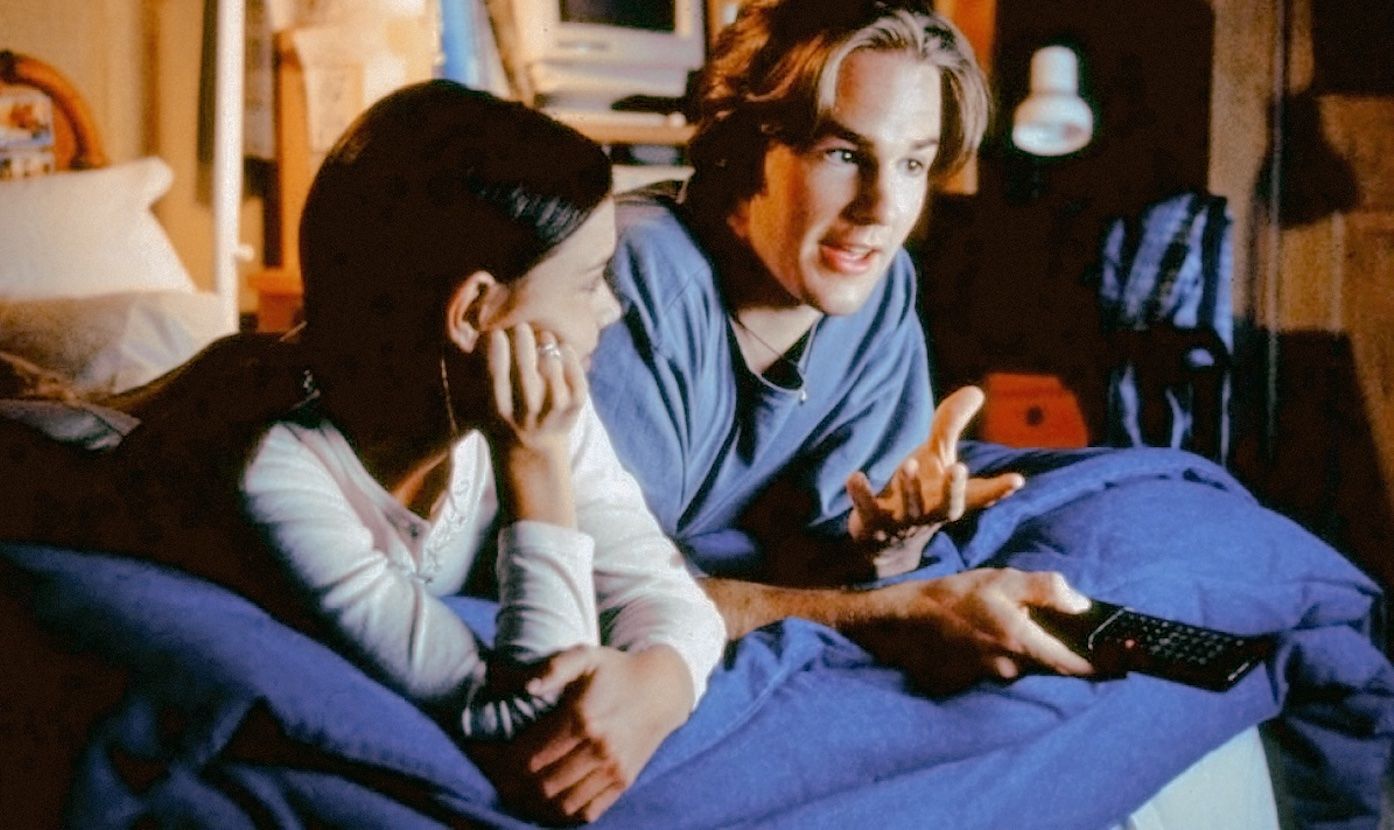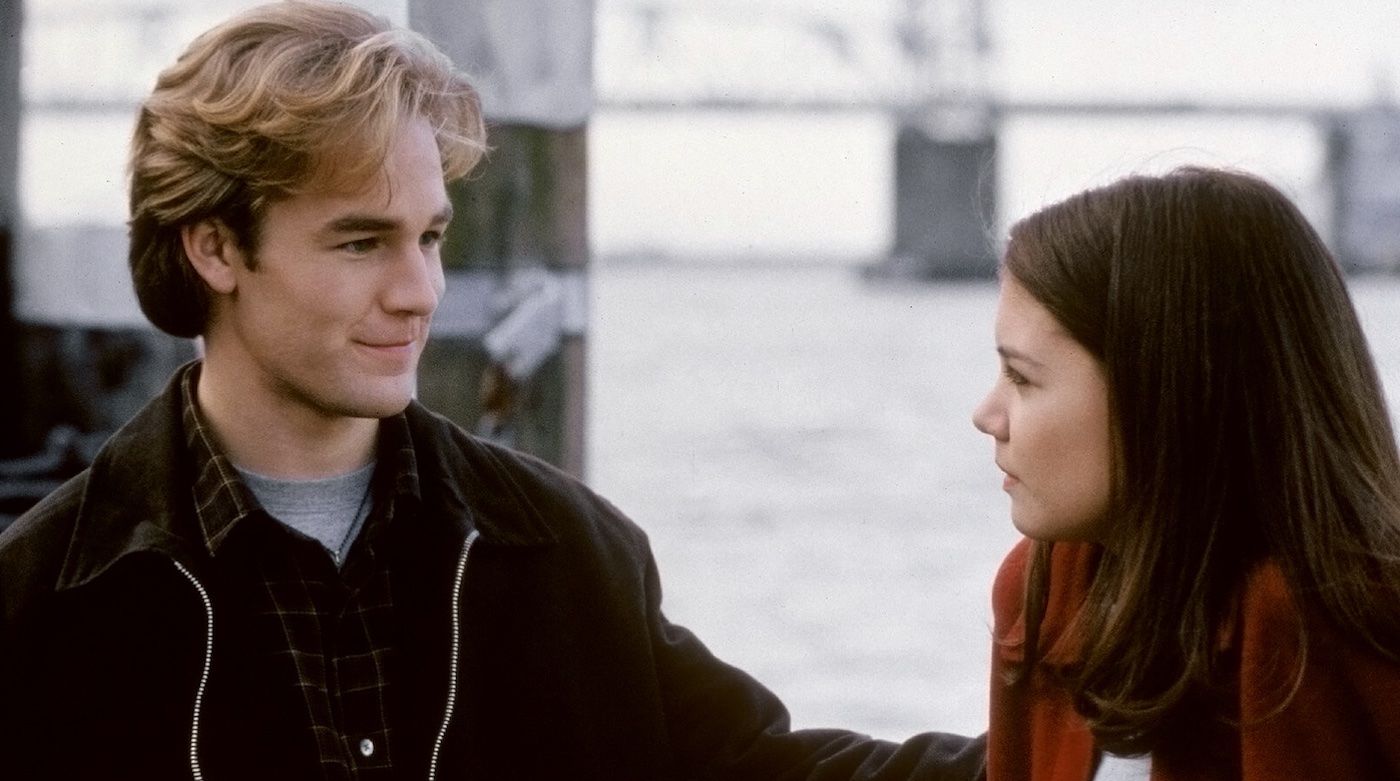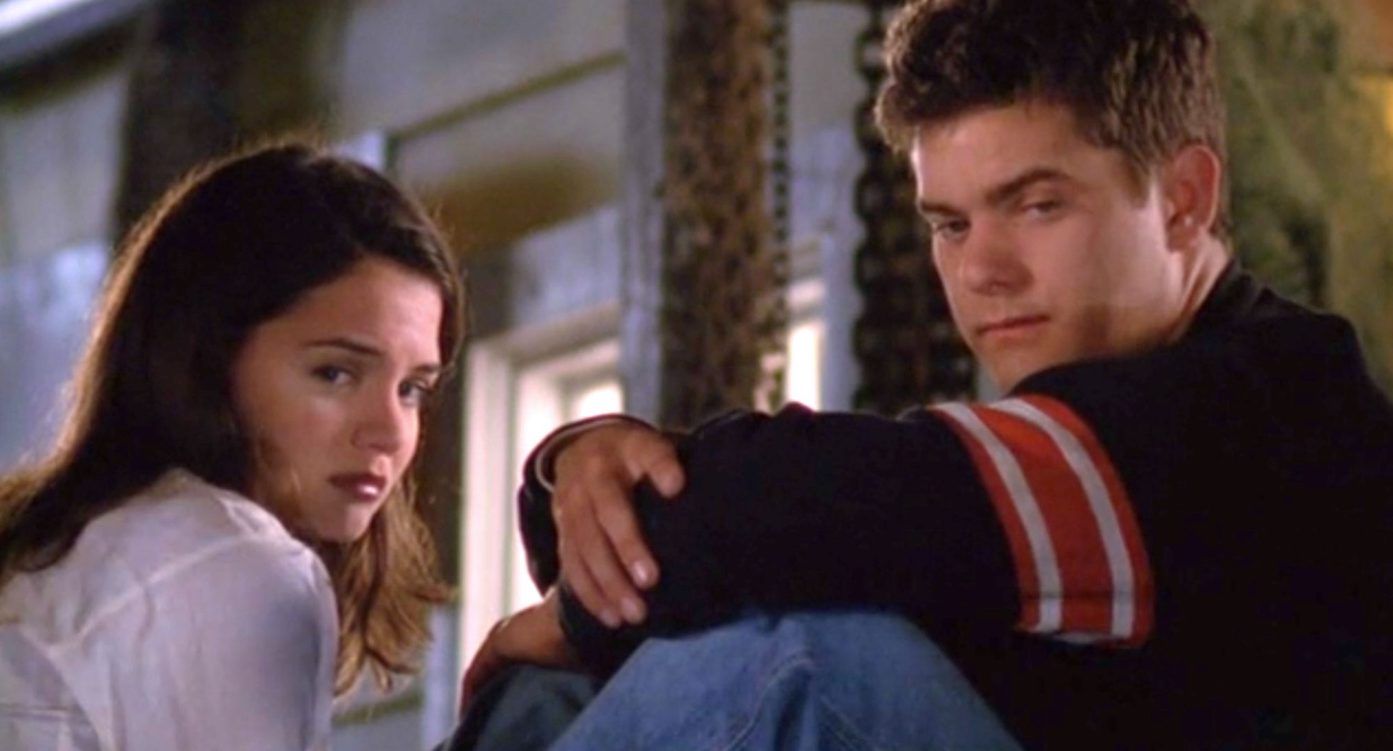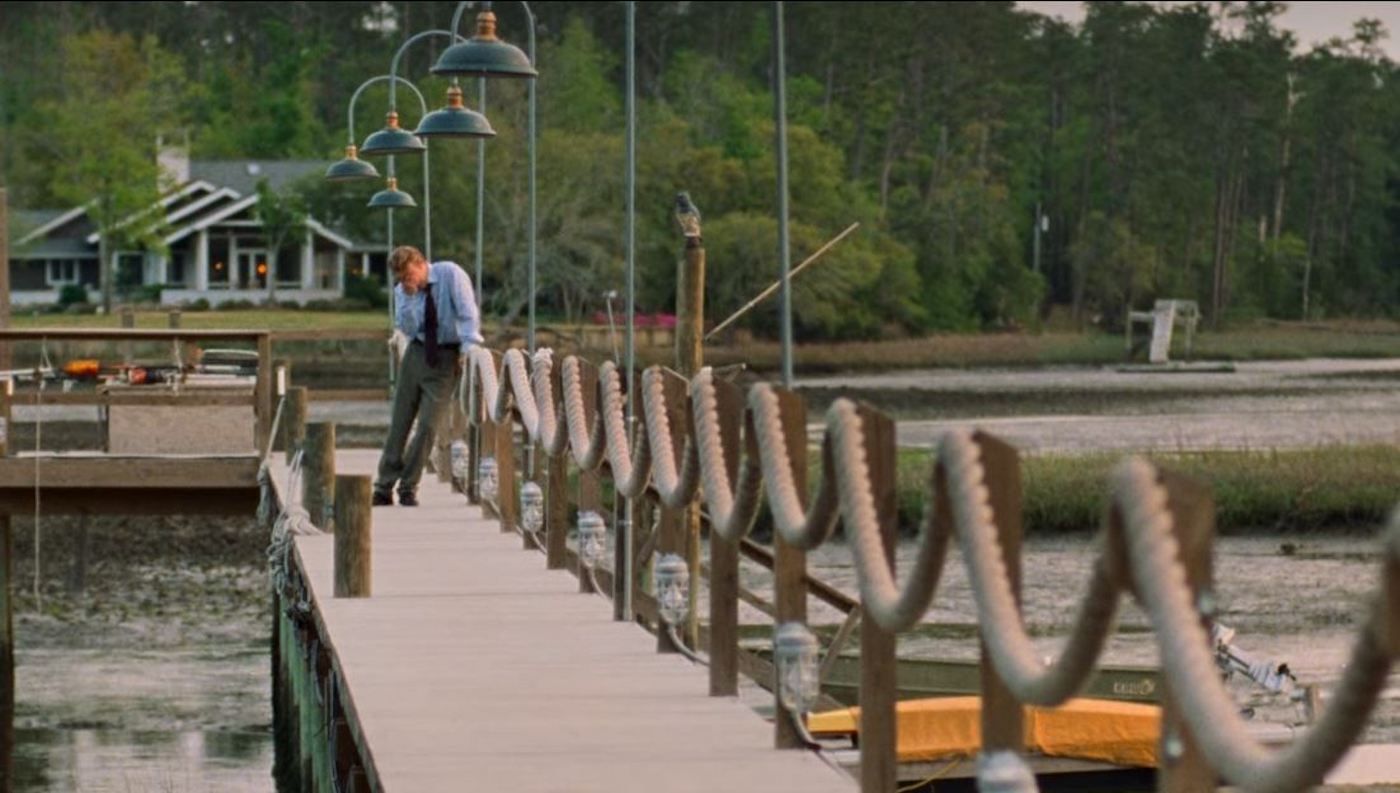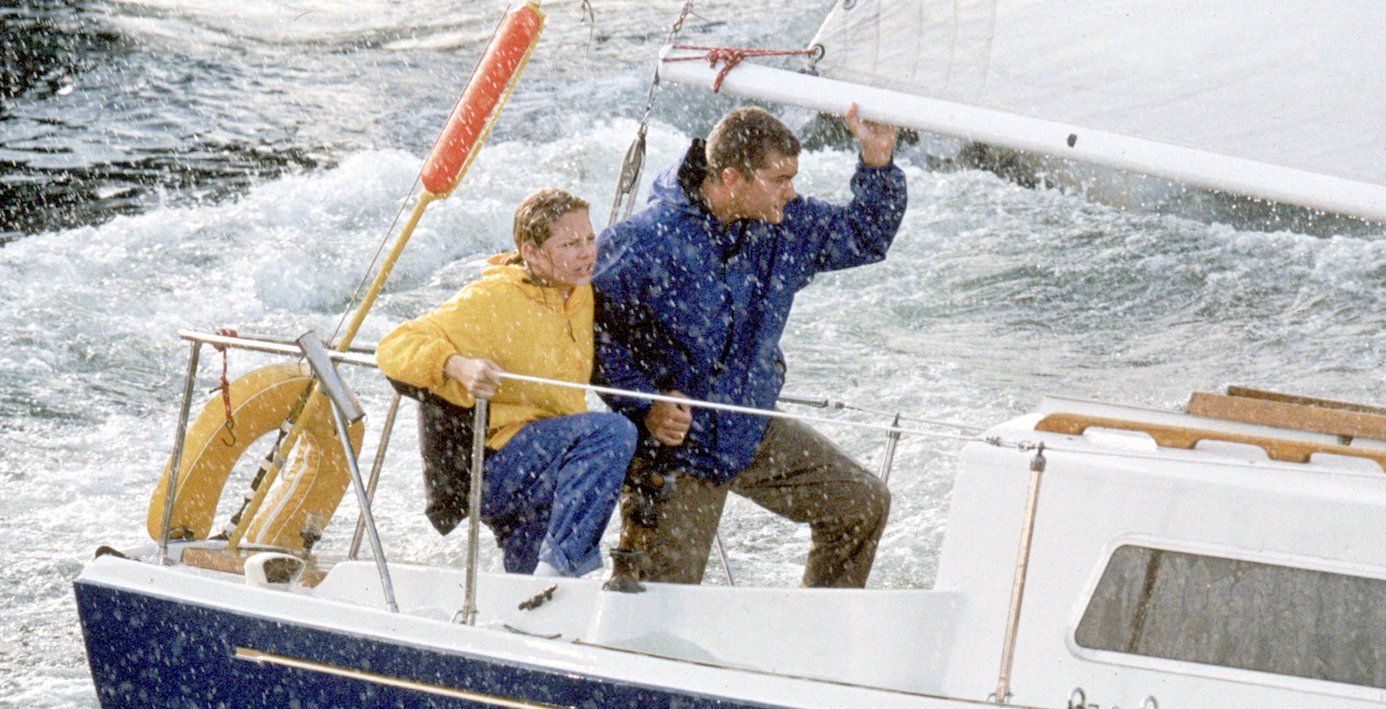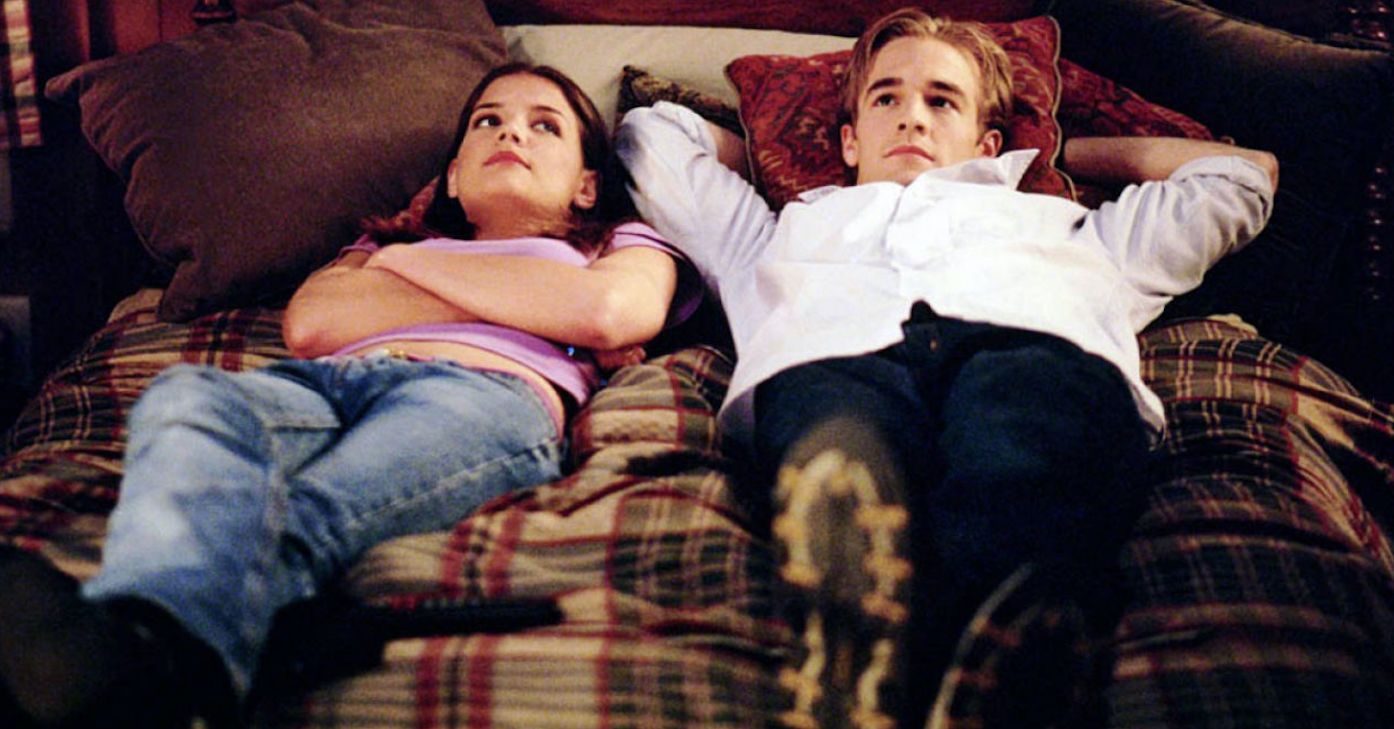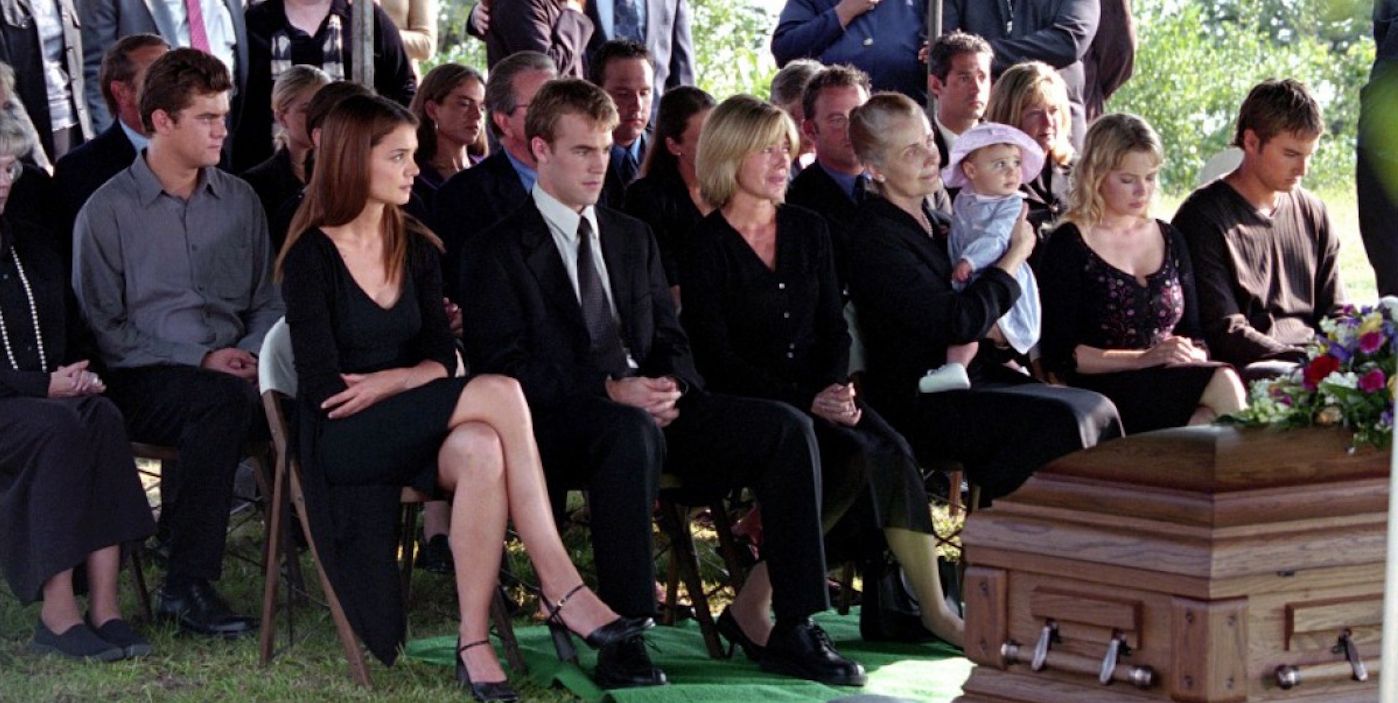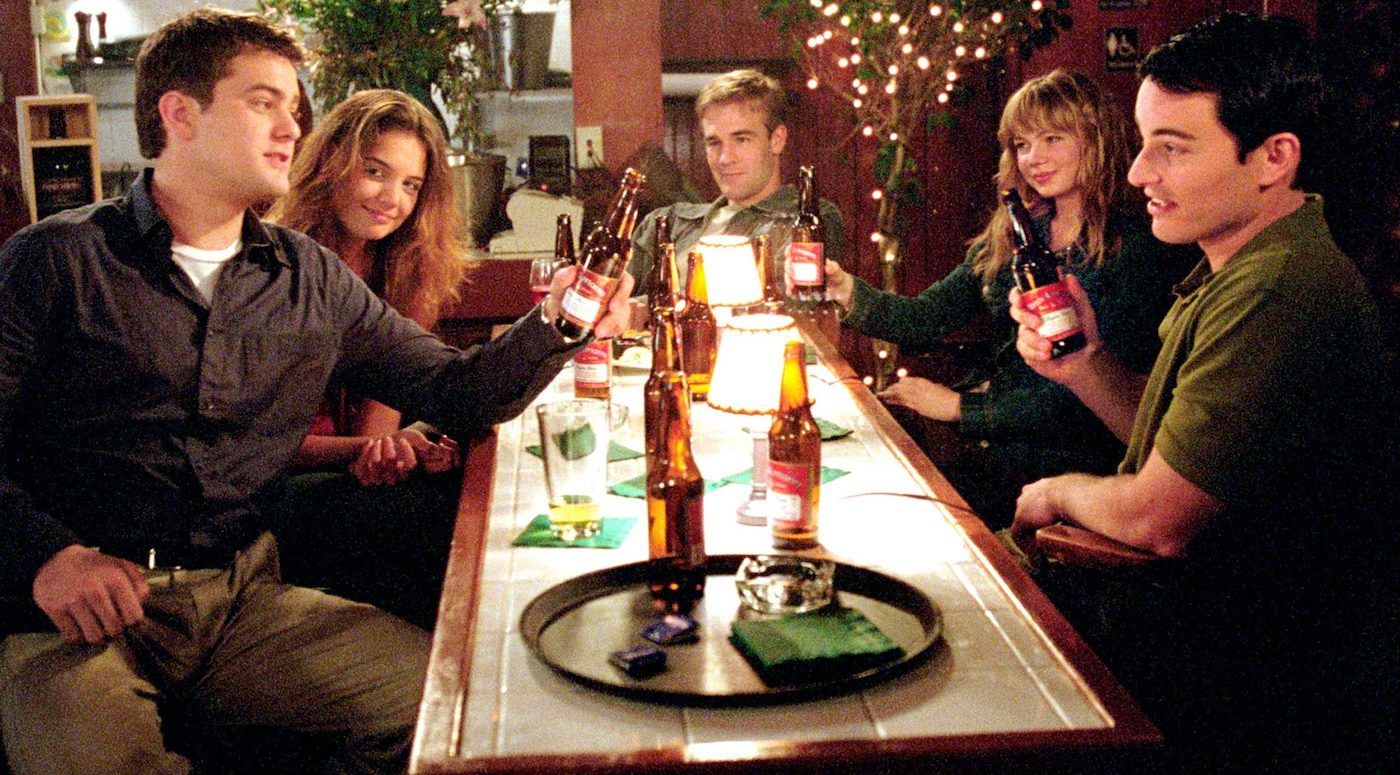Whether you watched Dawson’s Creek on The WB or caught it recently on Netflix, it’s worth looking back at the moments that defined a generation of teen television. While nostalgia has associated the show with love triangles, crying memes and Paula Cole’s “I Don’t Want to Wait,” (which has been rerecorded and officially restored as the series’ theme song on Netflix) these nine episodes encapsulate the hopeful, sincere spirit of Kevin Williamson’s beloved character-driven drama.
“Pilot”
The first episode sets the tone for the entire series, telling the story of best friends, dreamer Dawson (James Van Der Beek) and tomboy Joey (Katie Holmes) who spend most of their time discussing movies or their complicated young lives on the creek. Every episode of the show’s first season opens with a particular film, a device used as a thesis statement for each 42-minute installment. In the pilot, Dawson and Joey watch the heartbreaking final scene of Steven Spielberg’s E.T.: The Extra-Terrestrial, a story of letting go of childhood and in essence, that’s exactly what Kevin Williamson sets up within the first minute of Dawson’s Creek.
As sophomore year begins, jokester Pacey (Joshua Jackson) romances his English teacher, new girl Jen (Michelle Williams) arrives in town and Joey’s burgeoning romantic feelings for Dawson set her into a tailspin of uneasiness, jealousy and longing for her best friend. But the episode ends the same way it begins, with Dawson’s and Joey’s tight bond intact and The Pretenders’ “I’ll Stand By You” summing up all that the series would become.
“Decisions”
By the end of the first season, Dawson slowly realizes that his feelings for Joey are also more than platonic. Deciding whether she should spend her next school semester in Paris, Joey asks Dawson what he would do if she left. He says, “If Paris made you happy, then I would be happy for you.” While she contemplates her next move, Joey reluctantly visits her father (Gareth Williams) in prison and reveals that she thinks that nobody loves her - he tells her it couldn’t be further from the truth. “Dawson, he loves you Joey. Because he looks at you the same way your mother used to look at me.” While this episode is remembered for the culmination of 13 frustrating episodes of longing, the script from the late Dana Barrata (Jessica Jones) and Mike White (The White Lotus) is elevated to another level with stellar performances from Van Der Beek, Holmes and guest star Williams. The season finale bookended its successful freshman run, catapulting the show into a WB sensation.
“The Longest Day”
By the end of the third season, Joey is at another crossroads. Not only have she and Dawson broken up, but she has fallen deeply in love with their friend Pacey. In an effort to boost ratings, then-writer Greg Berlanti (Love, Simon) decided it would be in the show’s best interest to utilize Jackson and Holmes’ chemistry and have Pacey and Joey become the next will-they/won’t-they couple of the series. Alluding to Peter Bagdanovich’s coming-of-age film The Last Picture Show, this episode centers on Dawson discovering the truth about his best friends’ secret romance. Replaying the same events from three different perspectives, “The Longest Day '' culminates with the disintegration of Dawson and Pacey’s friendship; it’s the halfway point of the series, marking it the end of old friendships and the beginning of the series-long love triangle.
“True Love”
In the Season Three finale, Joey has to decide whether to spend the summer in Capeside with her friends Dawson, Jen, Jack (Kerr Smith) and Andie (Meredith Monroe) or follow her heart and sail away with Pacey. Mirroring “Decisions,” writer Gina Fattore (Dare Me) paralleled the finale with Dawson telling Joey, “Pacey is this year’s Paris.” This time, her happiness is more important than his own, so Dawson tells Joey to go - and she does, to her true love. The image of Dawson crying on the dock has since become an internet phenomenon, but within the context of the story, it is a genuinely touching scene.
“The Two Gentlemen of Capeside”
While Dawson’s Creek thrived on heightened dialogue and dramatic exchanges between characters, “The Two Gentlemen of Capeside” put words into action. Airing in October 2000, the fourth season begins with a bang as a storm rolls into Capeside and traps Pacey and Jen on a sinking sailboat. Dawson, the only person who would know their whereabouts, puts his personal feelings aside to help Joey rescue their friends at sea. Jeffrey Stepakoff's episode is a modern take on William Shakespeare’s "The Two Gentlemen of Verona," a comedy about two men in love with the same woman. Again, the theme circles back to friendship in its many forms. After the storm, when all is safe and sound, Pacey thanks Dawson for saving his life, telling him “However far off that may be, I do look forward to the day you and I might be friends again. So until then …” To which Dawson replies, “Until then,” a momentary reconciliation much like the gentlemen of Verona.
“Coda”
Fattore pays homage to “Pilot” and “Decisions” in the fourth season finale: one that finds the Capeside High School graduates onto their next adventure. Before Dawson leaves for a summer film program in Los Angeles, he spends one last night with Joey, Jen and Jack. They see American Graffiti at the Rialto Theater and exchange gifts (a cell phone for Dawson!) But what makes “Coda” (a musical term which refers to a passage that brings a piece to an end) officially brings Dawson and Joey’s childhood to an end. After all the drama and turmoil of the last four years, they watch E.T. again, playfully discuss their pasts and futures and tearfully say their goodbyes. As they hug by the window, Joey asks, “What was yours, by the way? Your all-time most life-altering moment?” To which Dawson replies, “I’d have to say it’d be this one right now. Saying goodbye to you.” He means Joey, literally, and their adolescence, figuratively. It’s essential viewing simply because it’s the conclusion of Joey and Dawson's friendship as teenagers as they venture out to the world as young adults.
“The Long Goodbye”
As the series went on, the cast was allowed to flex their acting muscles, perhaps giving their series-best performances (particularly Mary-Margaret Humes as recently widowed Gail) in “The Long Goodbye.” When Mitch Leery (John Wesley Shipp) dies unexpectedly in a car crash, Dawson is left to care for his mother and infant sister. In a supernatural-twist, honoring Shipp’s contribution to the series, Mitch appears to each main character, talking to them as if it’s a memory coming to life. Tom Kapinos’ script is heartbreaking in its subtlety, with Pacey driving Dawson out to the scene of the car crash and ensuring him, with all sincerity, that it wasn’t his fault. “So, why am I doing this?” Pacey says, “I'm doing this because, once upon a time, you and I were best friends. And that means that whenever you need me, I'm here. Any time, anywhere, any place. Forever.” It once again reiterates the theme of the series and exemplifies how Van Der Beek and Jackson’s onscreen dynamic was much richer than simply who got the girl.
“All Good Things …”“... Must Come to an End”
After leaving the show in its second season, series creator Kevin Williamson returned to write the last two coming-of-age chapters in the lives of Dawson , Joey, Pacey, Jen and Jack. Set five years in the future (2008), the group of friends return to Capeside for a wedding and an unexpected funeral. In the process, they’re forced to confront all the stones that 126 episodes had left unturned - including Joey’s final choice between Dawson and Pacey. A home-run, satisfying conclusion to a series that began with two friends dreaming about the future ends in the future, with two friends whose dreams came true.
The beauty of a series with six seasons is that everybody’s “essential” episodes will be different, simply based on what they relate to or enjoy the most. There were fun moments, like the John Hughes-esque bottle episode “Detention” or the KMart lock-in in “Castaways.” But there were episodes equally as poignant as they were enjoyable, like Jack’s heartbreakingly honest coming out in “... That is the Question” and Andie’s mental breakdown in “Ch … Ch … Changes.”
Beyond the crying memes and the labels of “teen” and “soap,” these episodes remain a place of joy, comfort and reminder of a simpler time in life, pre-cell phones, pre-social media, pre-pandemic. Perhaps the first line of the pilot sums it up best, when E.T. reassures Elliot, “I’ll be right here.” and Dawson’s Creek will be, too.

